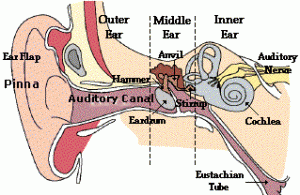Hearing is one of our most crucial senses, which allows us to communicate, to learn and to enjoy things like music and conversation. However, many people do not realize that they are exposing their ears to a huge amount of potentially damaging noise on a daily basis, even though they are not in noisy regions like industrial area or construction sites.
The Rising Concerns
Every year, millions of people suffer from hearing disorders, which range from partially impaired hearing to complete loss of hearing ability. Majority of the people facing this problem belong to the labour class, and also those people residing around regions where noise level are always above the safe designated level.
Exposure to high levels of noise can cause permanent hearing loss. Neither surgery nor a hearing aid can help correct this type of hearing loss. Short term exposure to loud noise can also cause a temporary change in hearing or a buzzing sound in your ears. These short-term problems might persist for few minutes or hours after leaving the noisy area. However, repeated exposures to loud noise can lead to permanent tinnitus i.e. hearing loss.
Loud noise can also lead to physical and psychological stress, increase heart beat rate, reduce productivity, interfere with communication and concentration, and contribute to workplace accidents and injuries by making it difficult to hear warning signals. Noise – induced hearing loss limits your ability to hear high frequency sounds, understand speech, and can impair our ability to communicate.

How does the ear work?
The structure of the ear can be broadly divided into three main parts: the outer ear or pinna, the middle ear and the inner ear. The outer structure of the ear is responsible, in part, for helping us to place the original location of a sound. It also helps to funnel and focus sound waves on their way to the middle ear and auditory canal. The middle ear contains the auditory canal, which spreads upto the eardrum, or tympanic membrane. Attached to the other side of the eardrum, are three tiny bones or ossicles, the malleus, incus and stapes (or hammer, anvil and stirrup) which then attach to a fluid filled structure called the cochlea of the inner ear at a point called the oval window. It is in the cochlea that the vibrations transmitted from the eardrum through the tiny bones are converted into electrical impulses sent along the auditory nerve to the brain. The inner ear, which is surrounded by bone, also contains semicircular canals, whose function is to maintain balance of sounds.
When sound waves enter the outer ear, the vibrations cause the ear drum to oscillate and are transmitted to the middle and inner ear. In the middle ear three small bones (hammer, anvil, stirrup) amplify and transmit the vibrations generated by the sound to the inner ear. In the inner ear, the snail-like structure called cochlea, which is filled with fluid, is lined with cells with very fine, microscopic hairs which move with the vibrations and convert the sound waves into nerve impulses which are sent to the brain for interpretation via the auditory nerve.
The Safe Limit for Sound
Noise is measured in a unit called “decibel”, named after the scientist Alexander Graham Bell. Researchers have stated that the noise level of more than 85 dB can be harmful for the hearing mechanism of the ear. Also, sudden noise can also cause devastative effects on the hearing ability.
Precautions to be taken
Controlling noise is the first line of defence against excessive noise exposure. The use of such techniques should aim to reduce the hazardous exposure at least to the point where the risk to hearing is minimized. With the reduction of even a few decibels, the hazard to hearing is reduced. There are several ways to control and reduce exposure to noise.
Controlling noise at its source
- Newer machines which operate with less noise should be used in industries and construction sites.
- Machines should be regularly cleaned, and lubricated before operation.
- Work which generates more noise should be carried out in covered zones, so as to reduce noise transmission. Also, the cover zones should be designed in such a way that the sound does not echoes of reverberates, which might otherwise affect the workers.

Controlling transmission of noise
- Enclose or isolate the noise source.
- Industrial units should be established away from densely populated areas.
- Noise barriers can be placed at the perimeters of noise source, such as construction sites.
- Trees should be planted in every place, around the noise source as they are the natural absorbers of sound. Some species are more effective than the others.
Measures to be taken at the receiver’s end
- Acoustic insulation by good glazing can cut down noise.
- Rooms which are more occupied should be constructed on the side of lesser noise prone area.
- Workers in industries should wear safety earplugs, and should not work for more than prescribed time limit.
- Hearing protection devices like earplugs, headphones and mufflers can be worn to protect oneself from noise.
- Listening to loud music is also not a good practice. Television sound and music should be heard at low volumes.



Leave a Reply